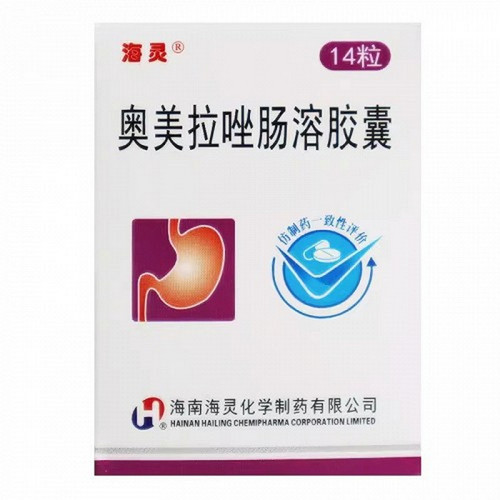Product Overview
[Drug Name]
Trade Name: Lanni
English Name: Omeprazole Enteric-coated Tablets
Chinese Pinyin: Aomeilazuo changrongpian
[Ingredients]
Omeprazole
[Properties]
This product is an enteric-coated tablet, which is off-white after removing the enteric coating.
[Indications]
It is suitable for gastric ulcer, duodenal ulcer, stress ulcer, reflux esophagitis and Zollinger-Ellison syndrome (gastrinoma).
[Usage and Dosage]
Oral, do not chew.
(1) Peptic ulcer: 20 mg once (1 tablet at a time), 1 to 2 times a day. Swallow once in the morning or once in the morning and evening. The treatment course for gastric ulcer is usually 4 to 8 weeks, and the treatment course for duodenal ulcer is usually 2 to 4 weeks.
(2) Reflux esophagitis: 20 to 60 mg once (1 to 3 tablets at a time), 1 to 2 times a day. Take it in the morning or once in the morning and evening. The course of treatment is usually 4 to 8 weeks. (3) Zollinger-Ellison syndrome: 60 mg (3 tablets at a time), once a day. The total daily dose can be adjusted to 20 to 120 mg (1 to 6 tablets) according to the condition. If the total daily dose exceeds 80 mg (4 tablets), it should be taken in two doses.
[Adverse Reactions]
This product is well tolerated. Common adverse reactions are diarrhea, headache, nausea, abdominal pain, gastrointestinal flatulence and constipation. Occasionally, increased serum aminotransferase (ALT, AST), rash, dizziness, drowsiness, insomnia, etc. are seen. These adverse reactions are usually mild and can disappear automatically. They are not related to the dose. No serious adverse reactions have been observed in long-term treatment, but gastric mucosal cell hyperplasia and atrophic gastritis may occur in some cases.
[Contraindications]
This product is contraindicated in patients who are allergic to this product, those with severe renal insufficiency and infants.
[Precautions]
1. When treating gastric ulcers, the possibility of ulcer-type gastric cancer should be ruled out first, as this product may alleviate symptoms and thus delay treatment.
2. Use with caution in patients with hepatic and renal insufficiency. 3. This product is an enteric-coated tablet. Be careful not to chew it when taking it to prevent premature release of drug particles in the stomach, which could affect efficacy.
[Special Population Use]
Precautions for Children: Contraindicated in infants and young children.
Precautions for Pregnancy and Lactation: Use with caution in pregnant and lactating women.
Precautions for the Elderly: No studies have been conducted and no reliable references are available.
[Drug Interactions]
This product may delay the elimination of drugs metabolized by the liver, such as diazepam, phenytoin, warfarin, and nifedipine. When used with this product, the dosage of the latter drug should be reduced.
[Pharmacological Actions]
Proton pump inhibitor. This drug is a fat-soluble, weakly alkaline drug that tends to concentrate in acidic environments. Therefore, after oral administration, it is specifically distributed in the secretory tubules of the gastric parietal cells. In this highly acidic environment, it is converted into its active sulfenamide form. It then irreversibly binds to the sulfhydryl group of the H+, K+-ATPase (also known as the proton pump) in the parietal cell secretory membrane via a disulfide bond, forming a sulfenamide-proton pump complex. This inhibits the enzyme's activity and blocks the final step in gastric acid secretion. Therefore, this drug has a strong and long-lasting inhibitory effect on gastric acid secretion caused by various causes.
[Storage]
Store tightly closed in a cool, dry place.
[Strength]
20mg
[Packaging Size]
Box
[Expiration Period]
24 months
[Approval Number]
National Medicine Standard No. H20083815
[Manufacturer]
Company Name: Chenxin Pharmaceutical Co., Ltd.







